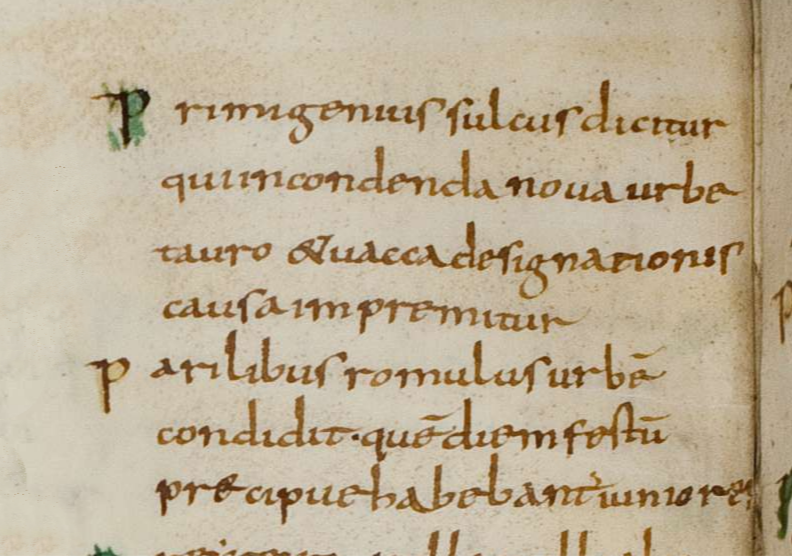AE Coin from Ekkarra, Achaea Phthiotis
- sulla80

- Sep 6, 2020
- 3 min read
Updated: Jan 29, 2022

The depiction of Artemis and portrait of Zeus on this 14mm, 2.0g, AE coin were the reason I purchased the coin. It wasn’t until it arrived that I began to dig up more information and unexpected provenance.

A map showing where the Achaea Phthiotis region is in Thessaly is easy to find. It is reputed to be the homeland of Achilles, who came from Phthia a town purported to be in the Spercheus river valley in Thessaly (near bottom of map above). Homer references this in the Illiad:
But Great Achilles stands apart in prayer, And from his head divides the yellow hair; Those curling locks which from his youth he vow’d, And sacred grew, the Sperchius’ honored flood; Then Sighing, to the deep his locks he cast And roll’d his eyes around the watery waste: “Sperchius! Whose waves and mazy errors lost Delightful roll along my native coast! To whom we vainly vow’d, at our return, … -Homer, Illiad, XXXIII
Ekkarra is a city in Achaea Phthiotis, whose name cannot be linked to existing ruins and for which there is no epigraphic evidence and no specific location. Little is known about Ekkarra, or why it would have produced a burst of local coinage in the late 4th century. A few finds of individual coins are the main clue to the location of this city; proposed between between Petroton and Achladi, on the assumption that individual coins would not have circulated far from home.
The city is documented in at least three sources (Acharrae in Livy and Acharne in Pliny are latinized forms of the names):
Livy 32.13.13 “They then took by assault and sacked the towns of Theuma and Calathas. Acharræ they gained by surrender.” Theuma was a town of Ancient Thessaly near the frontiers of Dolopia (southwest Thessaly).
Pliny 4.32 "Acharne" misplaced in a chapter on Magnesia (further north), and thought to be the same as the Acharræ on the river Pamisus, mentioned by Livy.
Stephanus of Byzantium in Ethnica, lists a city in Achaea: Akarra

Thessaly, Ekkarra, circa 325-320 BC, AE Chalkous
Obv: Laurel-wreathed, head of Zeus to the left in a circle of dots. The head of the Zeus is compact with wide cheeks. The beard and hairstyle are cut in stiff lines, and the hair covers the nape of the neck, a wavy line. Details like the pupil can be seen on the eyebrowed eyes.
Rev: ΕΚΚΑΡ / ΡΕΩΝ, downward, Artemis standing in between, in three-quarter view to the left. Her right leg is bent back. Her left arm rests on her hip, her right hand rests on a hunting lance, in the middle of which you can see a strap. Her hair is pinned up in a Lampadion knot and a bow and drapery appear on the nape of the neck, fastened crosswise in front of the chest with the shoulder strap. She is wearing a short sleeveless chiton (woolen tunic) and a himation (outer garment), and an endromides (cloak) lined with fur.
These coins are dated to the end of the 4th century BC based on their style. Zeus on the coins of the Ekkarra is associated with the cult of Zeus in Thessaly. The reverse depicts Artemis Kynegetis, a type that is also known from statues.

The city of Ekkarra had its peak, or at least its peak for minting its own coins, in the period before the Lamian War. The Achaeans and other Perioeci left Thessaly in 346 BC and allied themselves with the Macedonians, and together with other Thessalians they stood on the side of Alexander the Great. After Alexanders death in June 323 BC they fought with other Greeks against the Macedonians.
In the Lamian War, the cities of eastern Thessaly would probably have joined the Aetolian League. Thessaly was the central battlefield with the decisive Battle of Crannon, which ended with Macedonian victory in August of 322 BC.
At the end of the 4th century or at the beginning of the 3rd century BC a union of the Achaean cities was founded. There is evidence of this on the coins of Larisa Kremaste, Thebes, Peuma and Halos with an AX monogram. Ekkarra does not appear to have issued any coins with this monogram.

The surprise provenance: this coin showed up as a plate coin, 18a, in the most informative resource and catalog that I could find on these coins (source for much of the information above): K. Liampi, "Ekkarra, eine Stadt der Achaia Phthiotis: Ihre Lege nach den numismatischen Zeugnissen", U. Peter, ed. Stephanos Nomismatikos, Edith Schönert-Geiss zum 65.Geburtstag (Berlin 1998), pp. 417-439.



Comments